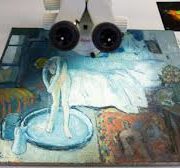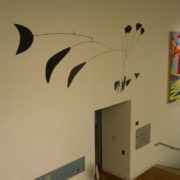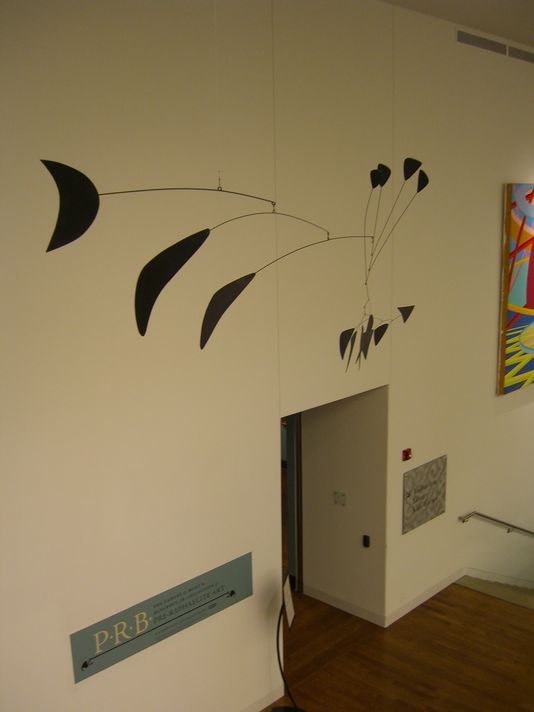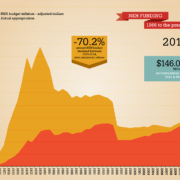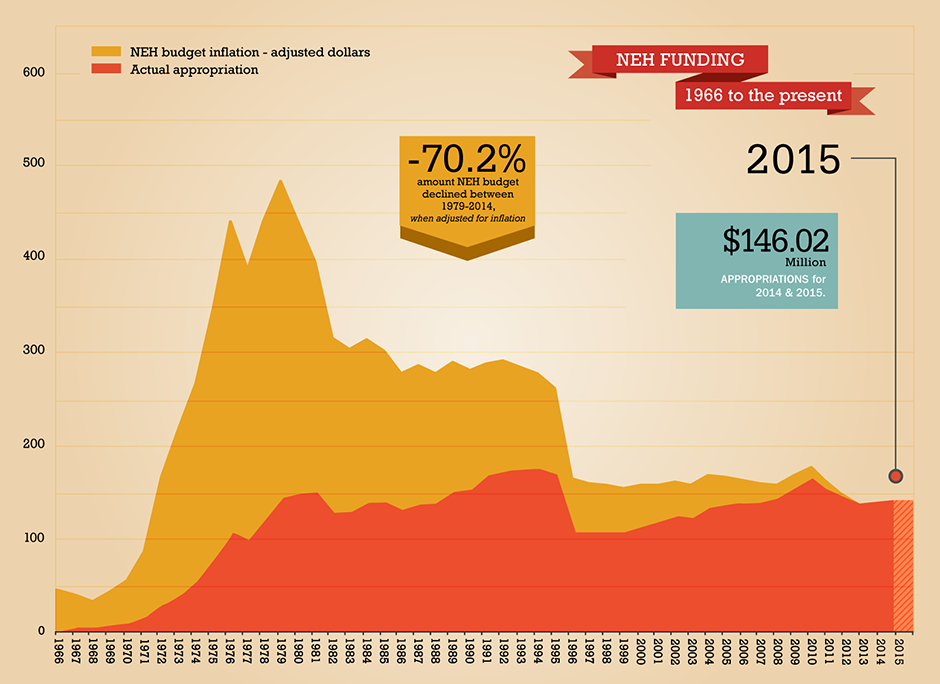Conservation “Discoveries” & the Art Above Them: Picasso at the Philips Collection
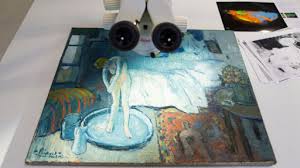
Picasso’s The Blue Room under microscope in the conservation studio at the Philips Collection. Courtesy: AP Photo/Evan Vucci.
Ruth Osborne
Traditionally, conservation and treatment analysis has been carried out on a work that requires such attention to ensure its physical stability.
Removing layers of grime and dirt or a yellowing varnish is the standard conservator’s diagnosis. With the invention of the blockbuster exhibition in the 1970s, more and more paintings were sent to the conservator’s studio in preparation for international travel to ensure works looked bright enough to appear before an audience of millions. Recently, more paintings have been placed under the microscope simply for the thrill of a hoped-for discovery.
This week’s case in point: Picasso’s The Blue Room at the Philips. Reports were made of a “hidden man” revealed beneath the top layer, shown to the conservator’s eye by the light of thermal imaging. It had reportedly been “long suspected” that there was something hidden beneath its surface, as connoisseurs’ eyes noticed an inconsistency between the brushstrokes in this area with the rest of the composition. Suspicion noted in a conservator’s letter from 1954 finally found justification with X-ray technology in the 1990s that was confirmed in 2008 by infrared imagery that allowed conservators to view the bearded man’s face.
For the past five years, scientists from major conservation departments in the Northeast have been working on getting a clearer vision of the figure in the painting. These include important players like Delaware’s Winterthur Museum, the National Gallery of Art, and Cornell University. Researchers are now on their own path attempting to pin down just whom the portrait depicts. [1]
News reports proudly announce the new advantages brought to studying art thanks to new scientific methods. As an article in Popular Mechanics relates revealingly:
“These days infrared technology is revealing all kinds of secrets about decades- or even centuries-old works of art. Phillips Collection associate conservator Patricia Favero, who works on this project, talks with us about art sleuthing with science…”[2]
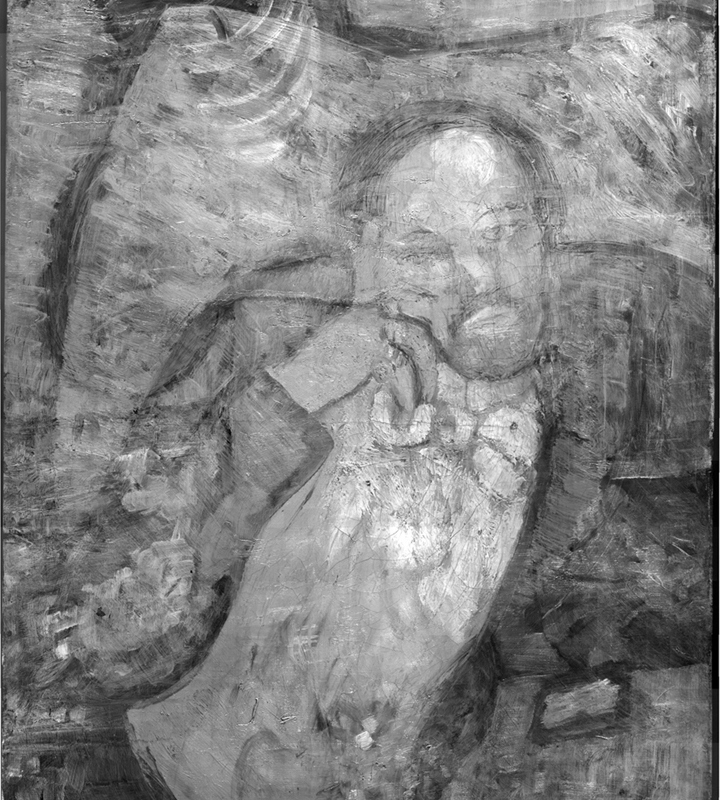
The mustached man beneath The Blue Room. Courtesy: AP Photo/The Philips Collection.
So far, the Picasso has undergone technical analysis by means of multi-spectral imaging technology and X-ray fluorescence intensity mapping. But this treats artistic heritage as objects to be poked and prodded at for the sake of discovery. According to the press office at the Philips Collection, their Picasso was under the microscope for reasons unrelated to its upcoming travel for exhibition in South Korea in 2015. We suspect it was being studied not in the interest of maintaining its physical integrity, but instead for the sake of uncovering the hidden figure beneath the surface. But at what risk to the finished image by the artist?
Recent “discoveries” like this one at the Philips have been highlighted in the media that praise the new advances in imaging technologies allowing modern conservators and scientists to hover closer over important artworks. These include a whale found beneath overpainting in a seventeenth-century Dutch seascape, a women painted over by Van Gogh, a Leonardo mural hidden beneath layers of old whitewash, and an ancient Roman fresco hidden under the work of nineteenth-century artist Giampetro Campana.[3] But one important thing news articles have failed to address is the impact of such thermal imaging on the paintings that allows them to make these discoveries.
For instance, the same high-intensity X-rays that exist in a particle accelerator were those used by a materials scientist and chemist in Belgium to scan the Van Gogh. Words used to describe the process are troublesome: “powerful X-ray bombardment caused atoms in the picture’s layers of paint to emit ‘fluorescent’ X-rays of their own.”[4] How does a treatment so forceful as to cause activity in the chemical structure of the painting not pose a threat to its overall stability?
As to the Picasso at the Philips, Director Dorothy Kosinski’s statement is emblematic of the rather voracious appetite with which collections are tossing works into the conservation studio:
“Our audiences are hungry for this. It’s kind of detective work. It’s giving them a doorway of access that I think enriches, maybe adds mystery, while allowing them to be part of a piecing together of a puzzle…The more we can understand, the greater our appreciation is of its significance in Picasso’s life.”
No doubt this five year-long examination is sure to go on until those involved find the gem they’re looking for. This discovery holds the possibility of making their Picasso world-famous for its hidden secrets about this household-name artist. Major exhibitions and travel are upcoming for The Blue Room; after it tours to South Korea next year, it will be the center of a major Picasso exhibit for 2017.
[1]Brett Zonigker, “AP Exclusive: Picasso painting reveals hidden man,” Yahoo News. 17 June 2014. http://news.yahoo.com/ap-exclusive-picasso-painting-reveals-hidden-man-065651732.html (last accessed 19 June 2014).
[2]Darren Orr, “Discovering a Hidden Picasso,” Popular Mechanics. 18 June 2014. http://www.popularmechanics.com/technology/engineering/extreme-machines/discovering-a-hidden-picasso-16904979 (last accessed 19 June 2014).
[3] “5 Lost Images Found Hidden Beneath Famous Paintings,” Gizmodo. 19 June 2014. http://gizmodo.com/5-lost-images-found-hidden-beneath-famous-paintings-1592796080 (last accessed 19 June 2014); “Whale tale: a Dutch seascape and its lost Leviathan,” University of Cambridge. Research News. 4 June 2014. http://www.cam.ac.uk/research/news/whale-tale-a-dutch-seascape-and-its-lost-leviathan (last accessed 20 June 2014).
[4] “X-rays reveal Van Gogh portrait,” BBC News: Europe. 31 July 2008. http://news.bbc.co.uk/2/hi/europe/7535574.stm (last accessed 20 June 2014).

